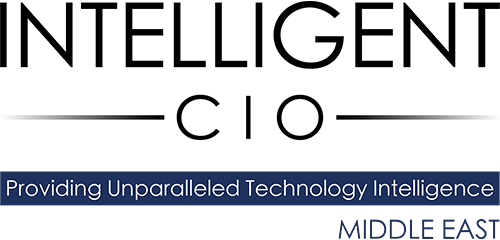ManageEngine identified six key priorities for 2025 that modern organisations should consider navigating through the challenging digital landscape. These priorities include scaling up AI usage, democratising cybersecurity, implementing a distributed governance model for compliance, reengineering experiences, embracing sustainability, and focusing on outcome-driven IT.
#1 Outcome-driven IT
Modern-day enterprises are powered by IT, which now occupies a place at the top of the management table. Any failure that results in services being unavailable or disrupted can result in huge business implications. Yet, in some quarters, IT is still considered a cost centre rather than a contributor to business profits.
IT leaders will need to clearly demonstrate the value generated by their IT investments or risk shrinking budgets. While dashboards provide metrics that point to the operational performance of a technology, they do not always present a clear case for the business benefits derived. That clarity can be gained by aligning IT with not only operational efficiency but also with business velocity and opportunity costs.
In 2025, CIOs need to closely focus on KPIs and metrics that provide a direct link to the business outcomes that depend on them. For instance, in the healthcare industry where there is constant focus on safeguarding data and compliance management, metrics that track user behaviour and anomalies, ensure continuous availability of critical assets, and give visibility into critical and high-risk vulnerabilities and incidents are most vital since they all affect business operations.
#2 Distributed governance model
Multiple regulations and their related, year-round audits will soon force privacy and compliance leaders to implement a distributed compliance framework to ensure pervasive compliance. The general practice so far has been to entrust compliance to a central team; however, the job is intrinsic to every department within an organisation.
The central compliance team is primarily responsible for programme management. It should have a pulse of what is happening in the industry and map the requirements evolving out of relevant regulations and standards. This central compliance team should keep leadership updated about the evolving landscape and macro challenges posed.
On the other hand, execution of the compliance programme should be broad, empowering business functions at all levels. Each team and business function should understand risk management and use it consistently to address non-conformities flagged during audits as well as for root cause analysis of incidents.
Specific attention should be paid to training people across various business functions. This allows a better governance model to evolve because stakeholders do not view compliance as an impediment but as an aid in growing business.
A distributed framework also ensures that controls are not overengineered. Likewise, processes are more in tune with business practicalities and do not degenerate into a set of tasks without any practical relevance. Finally, friction is reduced between the central compliance function and other business functions.
#3 Reengineering experiences
In any organisation, customers and employees are regarded as the most valuable assets. Every single interaction they have, be it with either a human or a machine, is critical in shaping their overall experience. These experiences are crucial in determining the fate of an organisation, making them a strategic priority for leadership.
With expectations evolving and technology advancing, reengineering experiences for users is instrumental in accelerating business transformation and sustenance. Ease of use, availability, consistency, being proactive with changes, contactless digital experiences, and keeping the feedback loop open are some key user expectations that cannot be ignored.
This approach involves reimagining and redesigning an organisation’s existing technology architecture, which may have scalability and compatibility issues, to deliver better than before. It also includes leveraging emerging technologies such as AI, generating actionable insights from data analytics platforms, customising workflows, and enabling multi-modal interactions.
Major challenges to reengineering include context setting—the size of the enterprise and the productivity hit taken during the shift. Another challenge would be ensuring IT security while at the same time ensuring those measures do not hinder or impact the user experience. However, reengineering ultimately fulfils the primary purpose of the business by enhancing employee engagement and customer satisfaction.
#4 Scaling up AI usage
The pursuit of digital maturity is reshaping how businesses are operating, and AI is playing a pivotal role in it. The past couple of years were significant for AI as a lot of enterprises ran pilots to harness its capabilities. As we approach 2025, enterprises will view AI integration from the lens of scaling up its usage and generating ROI.
It will also be a big year for AI in cybersecurity. With attacks becoming more sophisticated by leveraging AI, traditional cybersecurity measures may not be enough to defend against them. This is where investing in AI for defence becomes crucial. Investing in augmented AI is also becoming increasingly important as it can significantly enhance employee productivity.
Additionally, we can expect to see more LLMs being utilised in the enterprise setting. These LLMs will be equipped with agents that can make real-time API calls and augment their generative capabilities.
To realise all this, it is crucial for companies to have a robust data strategy in place. This includes streamlining relevant processes and ensuring that they are coordinated with that strategy. CIOs must prioritise data sovereignty and data preparation—operating on encrypted data—to guarantee the success of AI implementation.
#5 Democratising cybersecurity
Managing cyber risks at all levels of the workforce—and not restricting it to just the top organisational level—should be a priority for security leaders in 2025. This involves the democratisation of cybersecurity, which essentially makes everyone in an organisation responsible for its defence.
While there are some obvious benefits associated with this, such as proactive security management and increased cyber resilience, businesses also stand to benefit by way of cost savings, increased efficiency, and innovation in security practices.
Organisations should ensure employees undergo continuous security engagement programmes, which are different from the usual annual training sessions. Employees should also have access to the appropriate self-service tools and services. This becomes crucial since the biggest challenge to democratising security is poorly equipped employees and ill-defined processes.
#6 Embracing sustainability
Investments into GPUs are skyrocketing as they play a critical role in training deep learning models and supporting faster computing. However, their energy requirements, which are difficult to maintain and constitute massive carbon footprints, call for immediate intervention.
In the digital world, a sustainable outlook reduces the environmental damage inflicted by such advanced technologies, meets the demands of environmentally conscious customers, helps adhere to compliance standards, and improves efficiency, making it a key competitive differentiator and a strategic priority for organisations in 2025.
Regardless of the challenges involved in incorporating sustainability into existing business operations, organisations can still embrace it by conducting internal environmental audits, raising their investments to explore alternate energy sources, and gaining carbon credits.
By strategically prioritising the above aspects, enterprises will be empowered to secure their business posture, gain competitive advantage, and enhance their operational efficiency in the ever-changing digital ecosystem.



